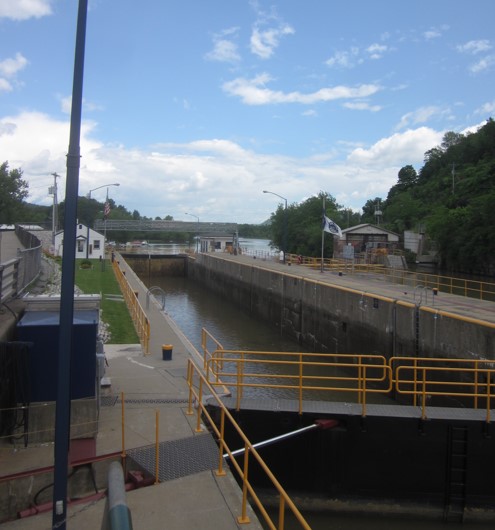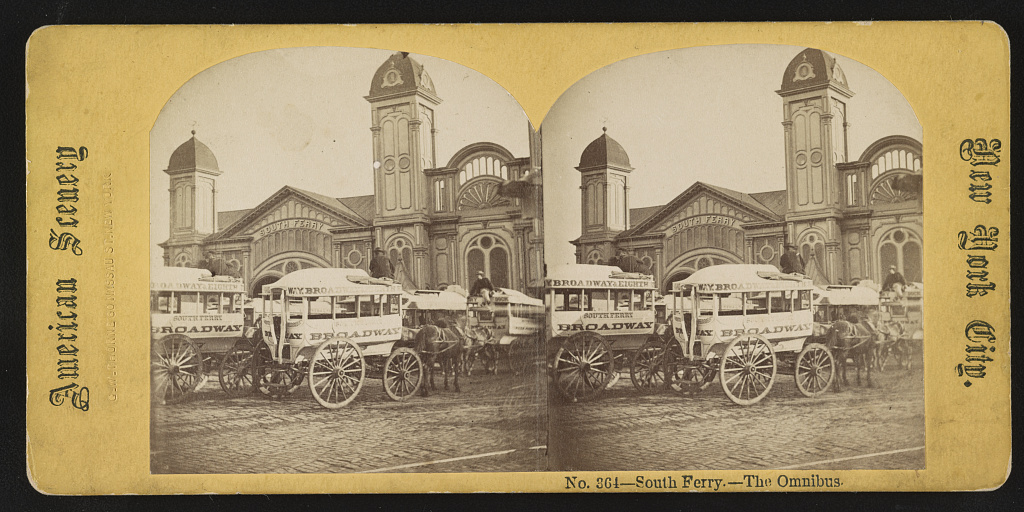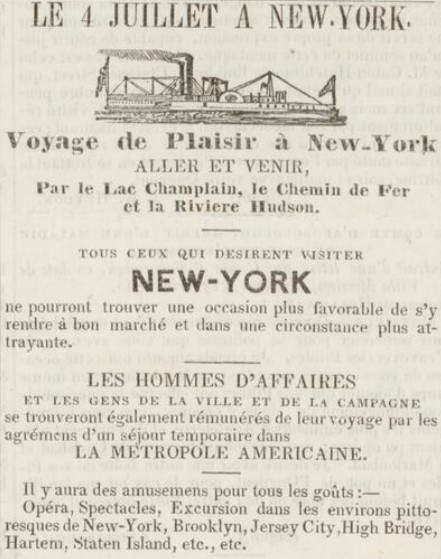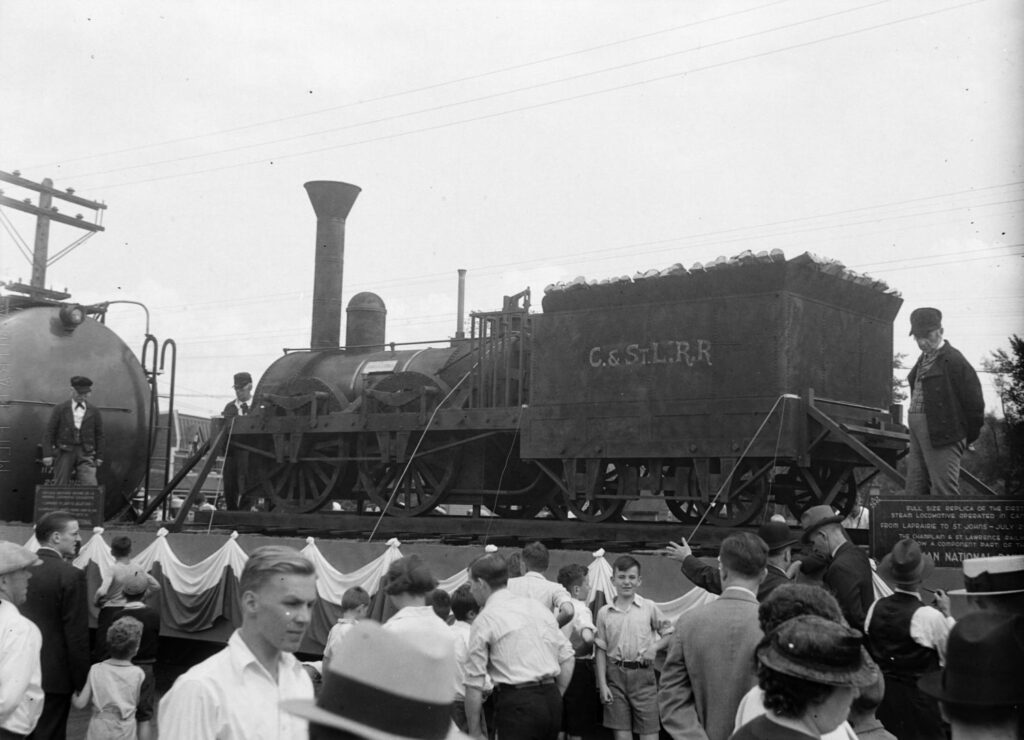For generations, the field of migration history has evolved around a basic framework of push and pull factors. We can explain people’s decision to relocate by looking at their existing circumstances and the suspected advantages (real or perceived) offered by their destination. But the how—the process of relocating—is too often lost in this framework, which assumes that people will find a way to migrate due to the near-deterministic forces at play.
The “connective tissue” between a place of origin and a destination is at least as important as the push and pull forces themselves. That connective tissue might include means of communication that enable people to learn about opportunities elsewhere, or yet kinship networks, which create a relationship to a distant locale. Most important of all is surely transportation that provides physical access—that makes migration possible in the first place. In the first half of the nineteenth century, it was a revolution in transportation that made the mass migration of French Canadians to the northeastern United States possible.
We can’t overstate the significance of that revolution. Until the advent of the railway, water had offered the easiest and fastest means of conveyance for goods and people. The revolution coincided with the creation of artificial waterways—canals—and efforts to extend and improve overland roads throughout eastern North America. But, at its core, the rapid shift replaced water, wind, and animal power with steam obtained from nonrenewal energy sources. Steamboats appeared on major waterways. Trains, conceived at first to connect different canal systems, very quickly supplanted these.

Previously, on this blog, we witnessed the challenges and discomforts of travel by sea with Bishop Joseph-Octave Plessis’s mission to the Maritimes colonies in 1815. Already, change was on the horizon. Robert Fulton had designed and launched the first viable steamboat in 1807. Lower Canada witnessed these advances as early as 1809, when a steamboat linked Burlington, Vermont, and Saint-Jean on the Richelieu River. The vessel presaged other international connections that the age of steam would bring. Of course, we should note that all of this was nice and well in the summer. Ice was sure to halt traffic on Lake Champlain, on navigable rivers, and on some canals for four months every year. Sleighs then took the place of watercraft.
The Champlain and Erie canals opened in first half of the 1820s. Although located south of the border, they would have an undeniable effect on Canadian commerce and migrations. The canal frenzy would also come to the Canadas, but policymakers continued to seek better overland transportation both within the colony and across the border. The most famous example may be the Craig Road, built in the 1810s to connect the Quebec City area to the United States through the village of Richmond, in Lower Canada. Beyond commercial advantages, it would ensure direct access to the Eastern Townships and facilitate settlement. Due to lack of maintenance and the expected ravages of weather, the road quickly fell into disrepair.
Another opportunity lay in the old Appalachian portage between the Chaudière River, in Lower Canada, and the Kennebec River, in Maine. An existing path that crossed the ridge of land and that became the Old Canada Road provided a glimpse of hope in January 1827. A Quebec newspaper announced that
[o]n Monday last, two persons arrived in Quebec by this road. They came in consequence of a subscription set on foot here some time ago to keep the road open. Two sleighs, the first carriages which have ever passed over the road, came to our settlement at Ste. Mane Nouvelle Beauce. The distance of unsettled country to be passed is 70 miles, which the sleighs passed over, beating the road, in five days. After a few sleighs have passed, the same road might be travelled over in two days. The distance to Boston from Quebec by this route is 90 miles shorter than by any other, and if the road were practicable at all seasons, intelligence from Boston might be received at Quebec in four days.
The two goodwill ambassadors explained that with the necessary subscription, at least fifteen more American sleighs would follow. These “cargos” would bring “fresh fish, which can he had in Maine at two cents a pound in great abundance, honey, butter, dried apples, American manufactures, &c.” They noted the opportunity to sell mass-produced New England textiles, which would be more affordable than British goods. One Canadian newspaper held out exchanges along the Champlain–Richelieu corridor as evidence of what this overland route might bring.
By the summer of 1827, Maine and Massachusetts, which still owned land in Maine, had committed to a road that would allow for carriage traffic. The road opened a migration stream as much as a commercial outlet. In the next fifteen years, French Canadians from the Beauce region in particular trickled into Skowhegan, Waterville, and Augusta. (James Myall has discussed the Canadian presence in Augusta and missionary visits to central Maine communities in this early migration period.)

The Americans’ journey in 1827 was mirrored in April 1844 by a Canadian mail carrier named Hough. Le Canadien celebrated the speed of his journey to Maine and ultimately to Boston. The story made no reference to Hough’s carriage, but considering the time of year and apparent ease with which he made the trip, it would undoubtedly have been a sleigh.
Mr. Hough left the Quebec Exchange on Thursday, March 28, at 2 o’clock in the afternoon with express mail for Boston, where he arrived the following Saturday at half past 7 in the evening. His dispatch was on board the Caledonia at 8 p.m. He left Boston the next day, Sunday, at half past noon and arrived in Quebec last Tuesday at 6 in the evening. The distance between Quebec and Boston via the Kennebec, the road taken by Mr. Hough, is more than 400 miles, such that he traveled more than 800 miles in five days and three hours, and of this time he spent 16 hours in Boston.
The same story announced the revolution that was sweeping the United States. The management of the railway stretching between Boston and Portland put a locomotive at Hough’s disposal. The cryptic article did not say whether Hough did rely on trains for that stretch of the journey, though that would certainly explain the “voyage prompt.”
A medical student’s travels in 1837 and again in 1851 hint at the immense transformation that occurred in little more than a decade. On the eve of the Rebellions, Olivier Robitaille traveled from Quebec City to Montreal aboard a steamer; he then took the new railway from the St. Lawrence to Saint-Jean and, from the Richelieu, reached the southern tip of Lake Champlain on a steamboat. The Champlain Canal and an omnibus (a large coach) brought him to Albany. A further string of steamboats brought him to New York and to Providence, from which he reached Boston by rail. If put end to end, these legs would have represented a continuous three-day journey. Robitaille would return to Quebec City by taking an omnibus through New Hampshire and Vermont, undoubtedly a much less comfortable journey. In 1851, Robitaille returned to Boston to celebrate the inauguration of a continuous rail line between Lower Canada and the Bay State.

This was also the inauguration of a new phase in Canadian migrations. Prior to the 1850s, the state of transportation deterred large families from attempting journeys to eastern New England. We have to think of the logistics of bringing essentials—food especially—and valuables for a rough overland journey that might take a week. The majority of nuclear families that migrated remained in the Champlain–Hudson corridor. With respect to Les Tisserands du pouvoir, an infinitely small proportion of French Canadians went to New England in ox carts.
The continent shrinked. While Robitailled prepared to visit Boston, in 1851, La Minerve announced another “voyage rapide.” Thanks, likely, to the Vermont Central Railroad, a traveler departing from Quebec City had reached Philadelphia in forty-one hours. Rail excursions for the middle class became common. Residents of Lower Canada took part in organized trips to St. Albans, Plattsburgh, and, as we have seen, New York City.
We mustn’t overstate the comforts of rail travel in this era. What rare passenger rail exists today in North America is a luxury in comparison to mid-nineteenth-century train travel. The smoke and soot often became unbearable. Passengers shared cramped quarters with strangers for long periods without proper sleeping arrangements, food services, or accommodations for other bodily needs. The cars carried every odor and, in the summer, extreme heat. But what they lacked in comfort they made up in convenience.

We’ve previously discussed longer-range migrations. When traveling to California during the gold rush, Canadian men appeared to have preferred the maritime route (around Cape Horn or through Panama) to the overland one. Easy access to the West was still years away. The first American transcontinental railway opened to thru traffic in 1869. A Canadian counterpart was only completed in 1885. Even as crews built the long segment across the Canadian Shield, people seeking to settle in the Canadian West typically traveled to Chicago and took American railways up to Minnesota and back across the border.
Much has been made of the cultural factors and policies alleged to have kept French Canadians out of the West. That is only a small part of the story. Through the 1860s, 1870s, and 1880s, most French-Canadian families appear to have gone abroad in search of short-term income—with the hope of returning home in the foreseeable future. From this mindset, it made no sense to cross the better part of the continent and cultivate another plot of land, with little access to wage labor or markets. Distance and transportation were significant factors—particularly, the cost, the time, and the other logistical issues involved in a four- or five-day journey when other agricultural opportunities existed, for families seeking those, closer to home.
Transportation does not alone tell the whole story of French-Canadian migrations, but it’s one we nevertheless cannot ignore.
Anyone interested in the cutting edge of research on French-Canadian mobility and community formation across the continent should read the forthcoming Déploiements canadiens-français et métis en Amérique du Nord (18e-20e siècles), edited by Yves Frenette, Marc St-Hilaire, and Marie-Ève Harton. It will be available this spring from the University of Ottawa Press.
Leave a Reply